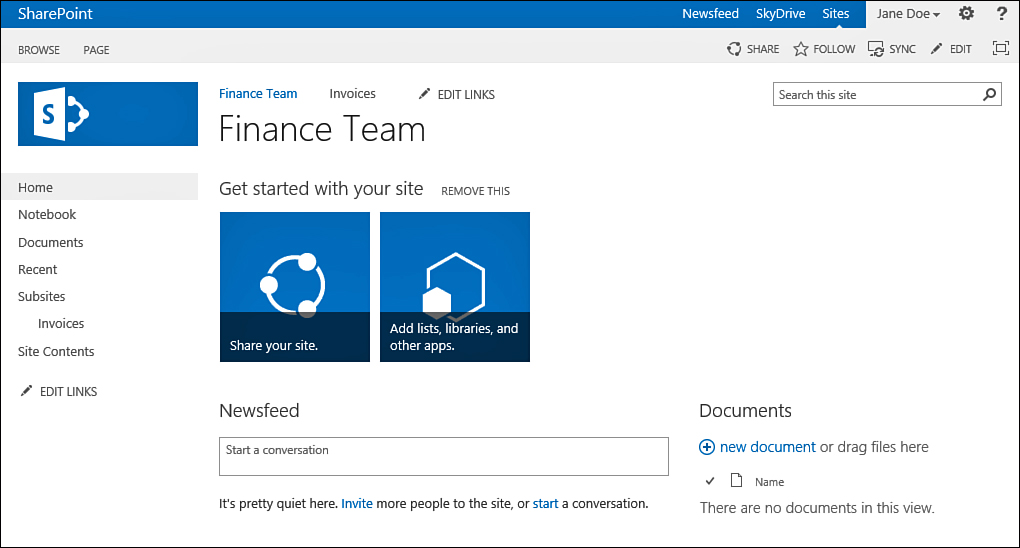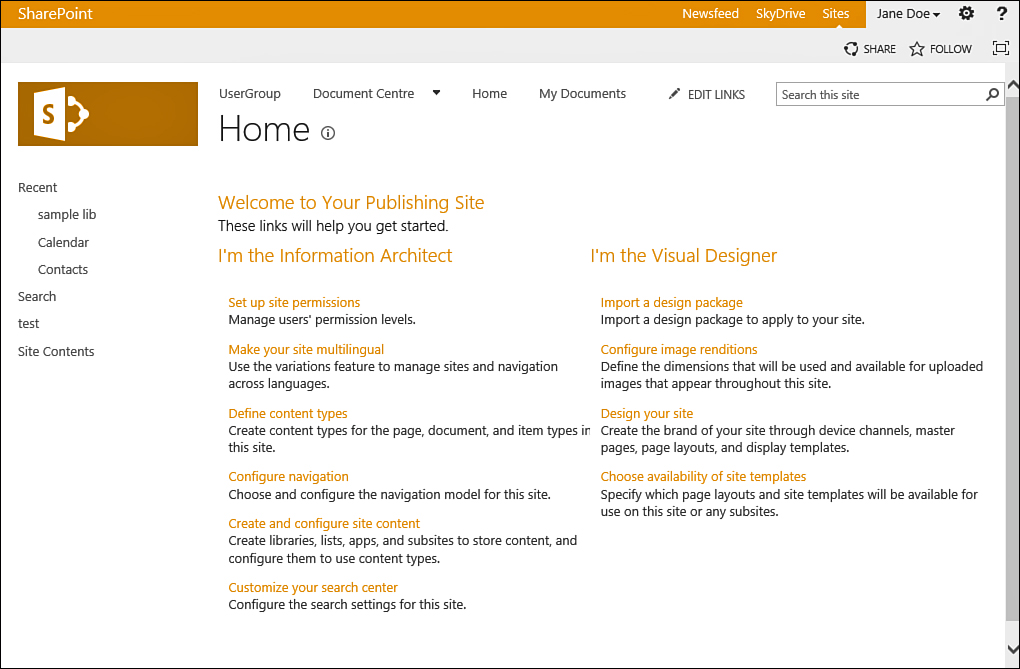SharePoint is a Microsoft platform
that allows people to build websites. SharePoint 2013 is the fifth
version of SharePoint from Microsoft, and it is also known as
SharePoint 15 or Microsoft SharePoint Server 2013. It is very different
from the versions that came before it.
SharePoint allows people to create websites
with various types of content and for various types of purposes. Its
many built-in features and components make it a comprehensive solution
that can fit many needs.
One common use of SharePoint in organizations is to create sites that are used for team collaboration, as shown in Figure 1. These collaborative sites, also known as team sites or group worksites,
enable team members to better work with one another. They can use the
site to share documents, assign tasks, track team events on a shared
web calendar, and much more. This use is known as a team collaboration system.

FIGURE 1 A standard SharePoint Team site.
Many companies use SharePoint for their central document storage, replacing network folders. This use is known as an electronic document management system.
Another common use is as a corporate portal
where the corporate employees can download forms, read corporate news,
fill in surveys, and search for documents. This use is known as an electronic content management system, or an intranet. An example of how such a site would look like is shown in Figure 2.

FIGURE 2 A customized SharePoint site, fit for an intranet.
Finally, some companies choose the SharePoint
platform as the platform for their Internet site—where visitors from
around the world can visit the company’s website and read about its
products, register for events, and do whatever it is the site has been
configured to allow them to do. This use is known as a web content management system.
This variety of possible uses of SharePoint
indicates the flexibility of the SharePoint platform. It is highly
customizable—which means that one SharePoint site can look entirely
different from another SharePoint site.
The SharePoint platform is also known as SharePoint Foundation.
The SharePoint product family has other
products that can be added on top of SPF to enhance the sites in
different ways. One of these products is called SharePoint Server, and
even that has two versions—standard and enterprise—each adding more
features. Often the term SharePoint is used to refer to either SPF or to the two extended versions of SharePoint Server—and this can be a bit confusing.
Because the SharePoint Server products are
extensions of SPF, sites built using those products have all the
capabilities of SPF sites, but with extra features. The following
section explains some of the differences between SharePoint Server and
SPF.
SharePoint
sites have many built-in features that make them useful, flexible, and
customizable—such as security management, lists of information,
document libraries (places to store and manage files and documents),
views, alerts, and searches.